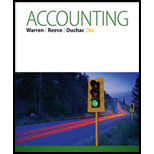
Classification of Assets
Asset: Assets refer to the resources owned by the business, which are utilized in the course of the business to generate revenue.
In accounting, the assets are classified into two categories:
Current Assets: Current assets are the assets that are easily convertible to cash within a year of business operations. For example, cash and cash equals, Account receivables, Inventories, Prepaid Expenses.
Non-current Assets: It indicates to the assets otherwise known as fixed assets, that are held by the concern for more than one year and are not meant to be sold in the near future rather held to generate profits. It is classified into two categories:
- Intangible Assets: It refers to the assets that have physical existence that can be seen, felt and touched. For example, property, furniture, and machinery.
- Tangible Assets: It refers to the assets that does not have any physical existence and cannot be seen, felt or touched. For example, patents, copyrights, and
goodwill .
To Identify: The following items as (a) current asset or (b) property, plant and equipment.
Want to see the full answer?
Check out a sample textbook solution
Chapter 4 Solutions
Accounting (Text Only)
- Accounts Payable is an example of an asset account.arrow_forwardFor each of the following assets or liabilities, state whether it is current or non-current: Accounts Payable Cash Property, Plant, and Equipment Note Payable Inventoryarrow_forwardWhich of the accounts listed below would be classified as asset accounts? Group of answer choices Accounts Receivable, Transportation Equipment, Prepaid expenses Service Revenue, Rent Expense, Dividends Accounts Payable, Service Revenue, Notes Payable Land, Capital Stock, Retained Earningsarrow_forward
- In the balance sheet, assets are listed by ___? A. The importance of the asset B. their date of purchase C. the order of liquidity D. The value of the assetsarrow_forwardArrange the following items in the proper balance sheet presentation: (Attached image for reference) Identify: ($ value - positive or negative) 1. Current assets 2. Total current assets 3. Capital assets 4. Net plant and equipment 5. Liabilities 6. Total current Liabilities 7. Total liabilitiesarrow_forwardThe following accounts were taken from the financial statements of Dream Company. Accounts classification Accounts classification Owner’s capital Building Wages Payable Prepaid insurance Unearned Revenue Drawing Instructions: Match each of the following accounts to its proper balance sheet classification, shown below. Current assets (CA) Current liabilities (CL) Long-term investments (LTI) Long-term liabilities (LTL) Property, plant, and equipment (PPE) Owner’s equity (OE) Intangible assets (IA)arrow_forward
- The entry to record depreciation includes a debit to the ________ account. A. Depreciation Expense B. Cash C. Equipment D. Accumulated Depreciationarrow_forwardClassifying balance sheet accounts For each account listed, identify the category that it would appear on a classified balance sheet. Use the following categories: Current Assets, Long-term Investments, Plant Assets, Intangible Assets, Current Liabilities, Long-term Liabilities, and Stockholders’ Equity. If the item does not belong on the classified balance sheet, put an X. Land (used in operations) Accumulated Depreciation—Equipment Common Stock Service Revenue Investment in Starbucks Corporation (to be held long-term) Accounts Receivable Equipment Buildings Notes Payable (due in 10 years) Unearned Revenue Cash Accounts Payable Prepaid Rent Dividends Land (held for investment purposes) Depreciation Expensearrow_forwardPrepare a classified statement of financial position in good form, without specific amounts. (List Current Assets in order of liquidity. ListProperty, Plant, and Equipment in order of Land, Buildings and Equipment.)arrow_forward
- Which group of items would most likely be included in the other assets account onthe balance sheet?a) Inventories, marketable securities, bonds.b) Land held for investment purposes and long-term prepayments.c) One-year prepaid insurance policy, stock investments, copyrights.d) Inventories, franchises, patents.arrow_forwardClassifying balance sheet accounts For each account listed, identify the category that it would appear on a classified balance sheet. Use the following categories: Current Assets, Long-term Investments, Plant Assets, Intangible Assets, Current Liabilities, Long-term Liabilities, and Stockholders’ Equity. If the item does not belong on the classified balance sheet, put an X. a. Land (used in operations) b. Accumulated Depreciation—Equipment c. Common Stock d. Service Revenue e. Investment in Starbucks Corporation (to be held long-term) f. Accounts Receivable g. Equipment h. Buildings i. Notes Payable (due in 10 years) j. Unearned Revenue k. Cash l. Accounts Payable m. Prepaid Rent n.Dividends o. Land (held for investment purposes) p. Depreciation Expensearrow_forwardExplain what are contra asset accounts, where they are on shown on the financial statements and give examples of each.arrow_forward
 Financial And Managerial AccountingAccountingISBN:9781337902663Author:WARREN, Carl S.Publisher:Cengage Learning,
Financial And Managerial AccountingAccountingISBN:9781337902663Author:WARREN, Carl S.Publisher:Cengage Learning, College Accounting, Chapters 1-27AccountingISBN:9781337794756Author:HEINTZ, James A.Publisher:Cengage Learning,
College Accounting, Chapters 1-27AccountingISBN:9781337794756Author:HEINTZ, James A.Publisher:Cengage Learning,


